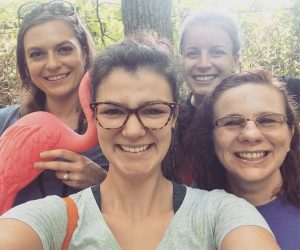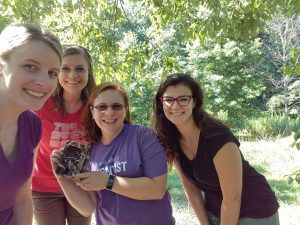Kenan says that their Fellow/Mentor partnership is the foundation of their program and let me just say I feel like I hit the mentor jackpot! Dr. Stephanie Schuttler, otherwise known as the Fancy Scientist, goes above and beyond when it comes to the role of a mentor.
They say to pick a time I learned something or had an “ah-ha” moment, but honestly every time I’m around Dr. Schuttler these two things occur. I’ve learned so much from day one, but data day was definitely a long day and the final “ah-ha” moment was worth it. We had spent hours trying to figure out how to get the data for eMammal and finally after lots of hard work BAM we got what we needed. The visitors of the science museum might have seen four women dancing happily through the glass windows.
Over the course of the fellowship, Dr. Schuttler has been there for us every step of the way. There was a perfect combination of working side-by-side and letting us go and figure things out on our own. She has even offered to come to our classrooms and speak to the students about the project and her career. This type of structure has resulted in a wonderful working friendship that I know will continue long after the fellowship is over.
I am currently waiting to hear if our abstract was accepted into the Citizen Science conference in Minnesota. This will be my first scientific conference and I am so excited for the opportunity to present the collaboration between Kenan, the State Science Museum, and the classroom.

 the 2016-2017 eMammal team
the 2016-2017 eMammal team